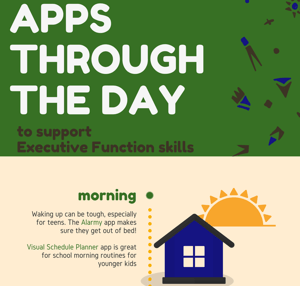Editor’s note: This week, we feature guest blogger Lisa Gurdin of LSGurdin Consulting. Please read more about Lisa below.
One of the hardest parts of being a parent is realizing that your child will not always listen to what you say just because you say it. This is a tough nugget to swallow. Shouldn’t children just listen to their parents? Isn’t it just enough to say, “Because I said so.”? I first realized this with my tantruming 2-year old every time we left the playground, toy store, or a playdate. I re-learned this when my middle schooler responded to my directives by walking away from me. I have heard parents complain that in response to their instructions, their child talks back, says no, or says nothing at all. Regardless of the specific response, the behavior leaves us parents feeling frustrated and angry.
listen to what you say just because you say it. This is a tough nugget to swallow. Shouldn’t children just listen to their parents? Isn’t it just enough to say, “Because I said so.”? I first realized this with my tantruming 2-year old every time we left the playground, toy store, or a playdate. I re-learned this when my middle schooler responded to my directives by walking away from me. I have heard parents complain that in response to their instructions, their child talks back, says no, or says nothing at all. Regardless of the specific response, the behavior leaves us parents feeling frustrated and angry.
The problem is, when we express those intense feelings at that moment, we make the situation worse. Wait...don’t we have the right to show our disapproval and anger at our child’s disregard and disrespect for our instructions? The problem is that once we engage our children in a verbal discussion or argument, it becomes a power struggle. Once the struggle starts, we have already lost the battle. We have completely given up our power. The question is, how do we regain our parenting power?
Here are some ideas for avoiding the power struggle and increasing the likelihood that your child will respond to your directive by simply saying “ok.”
- Engage your child in conversation throughout the day. This may seem like an unrelated thing to do - but talking to your child at times when you are not telling them what to do helps to establish a positive relationship. By interacting positively more often, you are showing interest in their daily lives. This is especially effective for teenagers.
- Embed your instructions in conversation. Instead of blurting out the directive without any introduction, first compliment your child or have a brief conversation about something unrelated. Then present your instruction. It's harder to ignore a request that is just part of an overall conversation.
- Be sure to say "thank you" when your child listens. This is an opportunity to model gratitude. Give lots of praise and positive feedback during the day as well.
- Offer a choice when you can. The choice can be when your child completes the task, in what order they do the task, or how they do it.
- Use what is called the Premack Principle - first you do what you need to do before you do what you want to do. For example, make going outside or playing video games contingent on finishing homework or taking the dog for a walk.
- Make a plan for yourself for the times your child does not listen to you so that you do not respond with anger and frustration. Take a deep breath, walk away, do an unrelated task, talk to your other children, etc. Go back to your child later and calmly talk to your child about what happened earlier and explain that you really need them to do what you asked. Have this conversation when you both have had time to calm down and return to a place when you can really listen to one another.
- Consider your child’s ability to do what you are asking. Perhaps they need help initiating the task, figuring out when to do it, or determining what is needed. This is important to consider, especially if a child has Executive Function challenges. Provide this assistance and then fade your help over time.
Sometimes, a little adjustment in our parenting approach can be enough to improve our child’s compliance while creating a positive relationship founded on mutual respect and communication. But be patient with yourself. Doing things differently takes time and practice. The goal is not perfection. The goal is to make progress and experience improvement over time.
 For over 17 years, Lisa Gurdin has been working with students, families, and school-based professionals as a Board Certified Behavior Analyst (BCBA) and Licensed Applied Behavior Analyst in Massachusetts. She runs LSGurdin Consulting in Boston, MA. Ms. Gurdin earned her master’s degree in Applied Behavior Analysis from Northeastern University, where she is a part-time lecturer.
For over 17 years, Lisa Gurdin has been working with students, families, and school-based professionals as a Board Certified Behavior Analyst (BCBA) and Licensed Applied Behavior Analyst in Massachusetts. She runs LSGurdin Consulting in Boston, MA. Ms. Gurdin earned her master’s degree in Applied Behavior Analysis from Northeastern University, where she is a part-time lecturer.
Download our infographic that describes 8 apps students can use throughout the day to help them manage time, stay focused and organized, and be productive.


